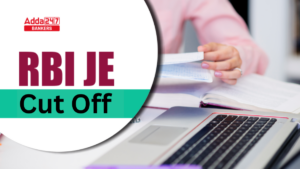Q1. Which of the following organisations is known as the market regulator in India?
(a) IBA
(b) SEBI
(c) AMFI
(d) NSDL
(e) None of the above
Q2. Very often we read in the newspapers about various measures taken up to control the flow of the capital in the Indian markets. Who amongst the following is/are the regulators who can control the flow of the same in India?
(1) Indian Bank’s Association
(2) RBI
(3) SEBI
(a) Only (1)
(b) Only (2)
(c) Only (3)
(d) Both (2) & (3)
(e) Both (1) & (2)
Q3. Interest on Savings deposit nowadays is _____________.
(a) Fixed by RBI
(b) Fixed by the respective Banks
(c) Fixed by the Depositors
(d) Fixed as per the contract between Bank and the Consumer Court
(e) Not paid by the Bank
Q4. The Holidays for the Banks are declared as per _________.
(a) Reserve Bank Act
(b) Banking Regulation Act
(c) Negotiable Instruments Act
(d) Securities and Exchange Board of India Act
(e) Companies Act
Q5. Equity schemes managed strong NAV gains which boost their assets’ was a new in some financial newspapers. What is the full form of NAV used as in above headlines?
(a) Nill Accounting Variation
(b) Net Accounting Venture
(c) Net Asset Value
(d) New Asset Venture
(e) None of the above
Q6. Who is a Banking / Business Correspondent Agent (BCA)?
(a) An authorized representative of a bank, who offer banking services where the bank doesn’t have a branch
(b) Any person who provides banking services in rural area
(c) An authorized representative of a bank, who makes profit for banks, by making business
(d) All of the above
(e) None of the above
Q7. Which of the following is true regarding SHG?
(a) A small voluntary group of poor people, generally from the same economic background, that promotes small savings among the members and make a common fund to help themselves
(b) Government / RBI has introduced several SHG – bank linkage program for Financial Inclusion
(c) Full form of SHG is Self Help Group
(d) All of the above
(e) None of the above
Q8. Suppose, two or more people have taken a loan. If one of them is unable to pay, then other members are fully liable to pay the whole amount of loan. This refers to –
(a) Joint Liability
(b) Several Liability
(c) Both (a) and (b)
(d) Several Assets
(e) None of the above
Q9. PAN card is mandatory for –
(a) Income Tax returns
(b) Tax Deduction at Source (TDS)
(c) bank deposits above Rs. 50,000
(d) All of the above
(e) None of the above
Q10. What is the full form of KYC?
(a) Know Your Company
(b) Know Your Customer
(c) Know Your Custodian
(d) Know Your Current-Account
(e) None of the above
Q11. In which stage, illegitimate money comes back to the mainstream economy as a legitimate money?
(a) Placement
(b) Layering
(c) Integration
(d) All of the above
(e) None of the above
Q12. What is the full form of PMLA?
(a) Provision of Money Laundering Act
(b) Prevention of Money Laundering Act
(c) Prescription of Money Laundering Act
(d) Proposition of Money Laundering Act
(e) None of the above
Q13. RBI has the legal right to issue bank notes, under which act?
(a) Coinage Act
(b) RBI Act
(c) Banking Regulation Act
(d) Companies Act
(e) None of the above
Q14. Who is responsible for minting coins in India, and under which act?
(a) RBI, Coinage Act
(b) RBI, RBI Act
(c) Government of India, Coinage Act
(d) Government of India, Banking Regulation Act
(e) None of the above
Q15. What is the maximum denomination of currency note that can be issued by RBI?
(a) Rs. 1,000
(b) Rs. 5,000
(c) Rs. 10,000
(d) Rs. 50,000
(e) None of the above



 The Hindu Review October 2022: Download ...
The Hindu Review October 2022: Download ...
 RBI JE Cut Off 2025, Check Previous Year...
RBI JE Cut Off 2025, Check Previous Year...
 Best Mock Test For SBI Clerk 2024-25 Exa...
Best Mock Test For SBI Clerk 2024-25 Exa...




